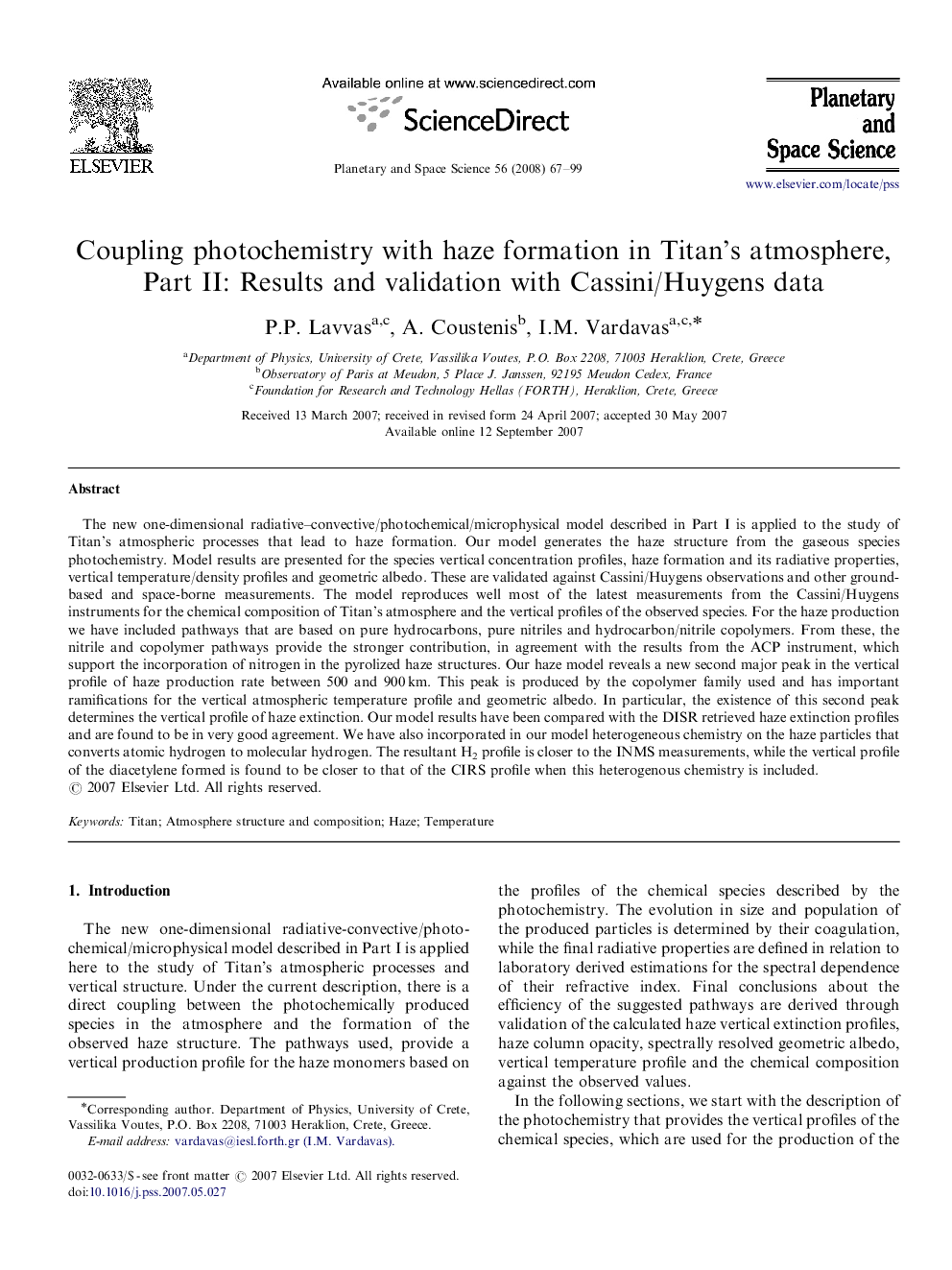| کد مقاله | کد نشریه | سال انتشار | مقاله انگلیسی | نسخه تمام متن |
|---|---|---|---|---|
| 1782435 | 1022336 | 2008 | 33 صفحه PDF | دانلود رایگان |

The new one-dimensional radiative–convective/photochemical/microphysical model described in Part I is applied to the study of Titan's atmospheric processes that lead to haze formation. Our model generates the haze structure from the gaseous species photochemistry. Model results are presented for the species vertical concentration profiles, haze formation and its radiative properties, vertical temperature/density profiles and geometric albedo. These are validated against Cassini/Huygens observations and other ground-based and space-borne measurements. The model reproduces well most of the latest measurements from the Cassini/Huygens instruments for the chemical composition of Titan's atmosphere and the vertical profiles of the observed species. For the haze production we have included pathways that are based on pure hydrocarbons, pure nitriles and hydrocarbon/nitrile copolymers. From these, the nitrile and copolymer pathways provide the stronger contribution, in agreement with the results from the ACP instrument, which support the incorporation of nitrogen in the pyrolized haze structures. Our haze model reveals a new second major peak in the vertical profile of haze production rate between 500 and 900 km. This peak is produced by the copolymer family used and has important ramifications for the vertical atmospheric temperature profile and geometric albedo. In particular, the existence of this second peak determines the vertical profile of haze extinction. Our model results have been compared with the DISR retrieved haze extinction profiles and are found to be in very good agreement. We have also incorporated in our model heterogeneous chemistry on the haze particles that converts atomic hydrogen to molecular hydrogen. The resultant H2 profile is closer to the INMS measurements, while the vertical profile of the diacetylene formed is found to be closer to that of the CIRS profile when this heterogenous chemistry is included.
Journal: Planetary and Space Science - Volume 56, Issue 1, January 2008, Pages 67–99